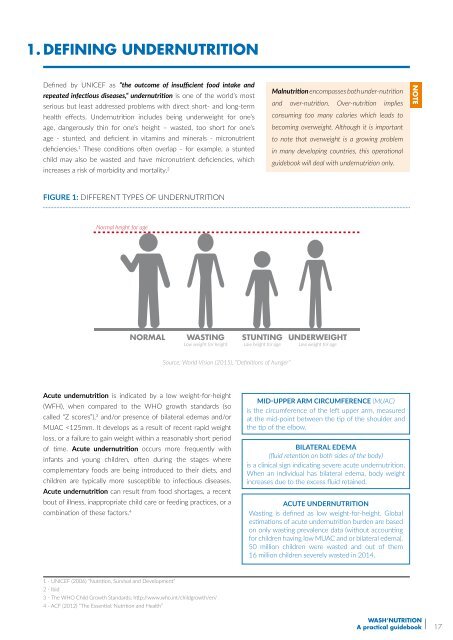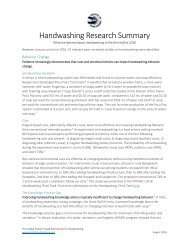WASH’ Nutrition
manuel_wash_nutrition_online
manuel_wash_nutrition_online
You also want an ePaper? Increase the reach of your titles
YUMPU automatically turns print PDFs into web optimized ePapers that Google loves.
1. DEFINING undernutrition<br />
Defined by UNICEF as “the outcome of insufficient food intake and<br />
repeated infectious diseases,“ undernutrition is one of the world’s most<br />
serious but least addressed problems with direct short- and long-term<br />
health effects. Undernutrition includes being underweight for one’s<br />
age, dangerously thin for one’s height – wasted, too short for one’s<br />
age - stunted, and deficient in vitamins and minerals - micronutrient<br />
deficiencies. 1 These conditions often overlap - for example, a stunted<br />
child may also be wasted and have micronutrient deficiencies, which<br />
increases a risk of morbidity and mortality. 2<br />
Malnutrition encompasses both under-nutrition<br />
and over-nutrition. Over-nutrition implies<br />
consuming too many calories which leads to<br />
becoming overweight. Although it is important<br />
to note that overweight is a growing problem<br />
in many developing countries, this operational<br />
guidebook will deal with undernutrition only.<br />
NOTE<br />
Figure 1: Different types of undernutrition<br />
Normal height for age<br />
Normal<br />
Wasting<br />
Low weight for height<br />
Stunting<br />
Low height for age<br />
Underweight<br />
Low weight for age<br />
Source: World Vision (2015), “Definitions of hunger”<br />
Acute undernutrition is indicated by a low weight-for-height<br />
(WFH), when compared to the WHO growth standards (so<br />
called “Z scores”), 3 and/or presence of bilateral edemas and/or<br />
MUAC



